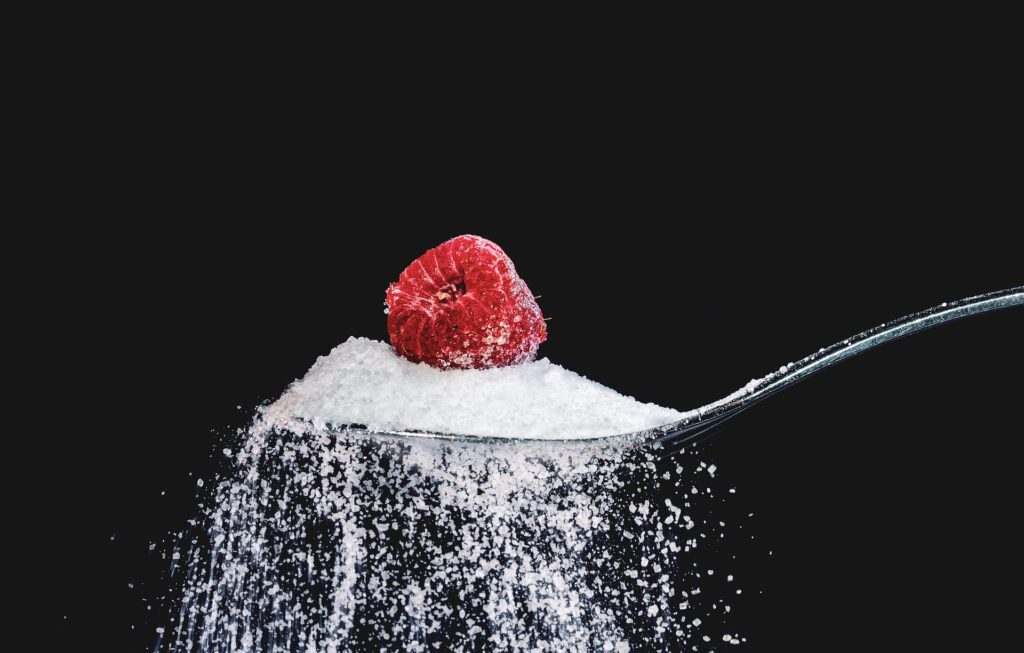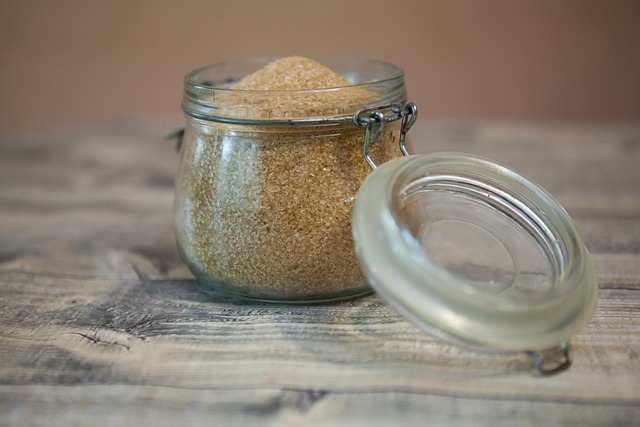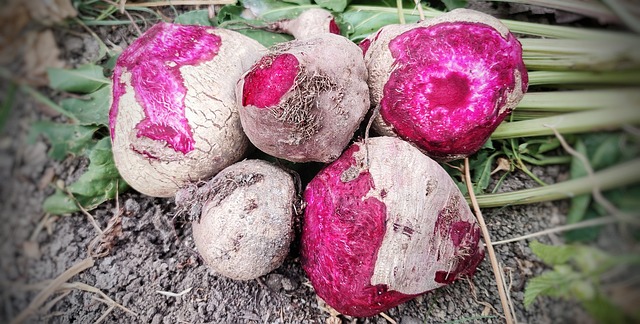Given the growing concern about the high sugar content of many meals and drinks and the ill health that follows from excessively overeating them, it’s no surprise that queries about sugar in preserves are frequently asked.

The Role of Sugar in Preserves
Sugar helps to create the desired sweetness in the final product. This is an essential feature of sweet preserves when used appropriately, and it can also enhance the flavours of the other ingredients, which together can make for an enjoyable experience.
It also acts as a preservative, helping to keep foods fresh for longer. While sugar does not prevent the growth of bacteria, it does help to inhibit their growth. Sugar also helps to preserve the colour and texture of fruits and vegetables by drawing out moisture and preventing spoilage.
When making preserves, it is important to adhere to the recipe instructions for sugar content. Too little sugar will not provide enough preservation, while too much sugar can make the preserves too sweet.
Therefore, it is advisable to follow the recipe closely to achieve the desired outcome.
Types of Sugar
Many different types of sugar can be used in preserves.
White sugar
White sugar is the most common type of sugar used in preserves. It is also the type of sugar that is most easily available and typically the cheapest. White sugar is made from sugar cane or sugar beets and is highly refined.
Caster sugar is a good option because it is finely ground and dissolves easily in liquid. This is important because you want the sugar to dissolve evenly in the fruit mixture so that the jam or chutney has a smooth texture. It dissolves easier in water and is less likely to make the mixture stick to the pan too easily.
You can also use granulated white sugar, but it might take longer for the sugar to dissolve completely.
Another option is to use superfine sugar, which has a similar texture to caster sugar but dissolves even more quickly.
Ultimately, it is up to you what type of sugar you use, but keep in mind that the texture of your preserve might be affected by the type of sugar you choose.
Brown sugar
Brown sugar is less refined than white sugar and therefore retains some of the molasses from sugar cane or sugar beet. This gives it a slightly darker colour and a more intense flavour.

Brown sugar can be used in place of white sugar in preserves, but keep in mind that it will affect the flavour and colour of the final product. It can give the product a richer, deeper, more caramel-like flavour.
There are different types of brown sugar, each with its own unique flavour. To choose the right one for your preserve-making, it’s important to understand the difference between them.
Light brown sugar has a milder flavour than dark brown sugar. It’s also less molasses-y, so it won’t add as much moisture to your preserves.
For a more assertive flavour, go with dark brown sugar. It has a stronger molasses flavour and will also add more moisture to your preserve.
If you’re looking for something in between, try muscovado sugar. It has a deep, rich flavour and a high moisture content (which can affect the setting of a product).
The difference between these versions of brown sugar is determined by the amount of molasses in them. Turbinado sugar and evaporated cane juice are essentially less processed versions of brown sugar.
Whichever type of brown sugar you choose, it’s sure to add delicious depth of flavour to your preserves.
Raw sugar
Raw sugar is the most common type of sugar, made from evaporated and crystallized juice extracted from sugar cane or sugar beet.
This sugar is less processed than refined sugar, and as a result, it retains more of its natural flavour. In addition, raw sugar is often darker in colour, which can add a beautiful richness to your preserves.
When using raw sugar, it’s important to keep in mind that it may not dissolve as easily as refined sugar. With a little care and attention, raw sugar can be a great way to add a unique taste and dimension to your homemade preserves.
Coconut Sugar
Coconut sugar is a type of sugar made from the sap of coconut palms. It has a lower glycemic index than cane sugar, and it is also higher in vitamins and minerals.
Coconut sugar can be used in preserves in place of cane sugar, and it will have a similar effect on the finished product.
The main difference is that coconut sugar will provide a slight coconut and caramel taste to the preserves. It shares similarities with palm sugar and jaggery.
Coconut sugar contains a fibre called inulin which may have some health benefits. But, coconut sugar still contains a lot of sugar – it still consists of around 70- 80% sucrose.
Palm Sugar
Palm sugar is a sweetener with a more caramel-like flavour, and is derived from the dap of palm trees. The sugars from the different varieties of palms (coconut, date, nipa, sugar and Palmyra palms) may have a slightly different composition but can be used interchangeably. It is often used in Southeast Asian cooking as a way to add sweetness without making the dish too cloying.
When using palm sugar in preserves, it is important to be aware that it will not dissolve as easily as white sugar. As a result, the preserve will have a slightly grainy texture. Nevertheless, palm sugar can add a delicious depth of flavour to any preserved recipe.
Beet sugar
Beet sugar is a type of sugar that is made from beets. It is a type of sucrose, and it is a natural sweetener. Beet sugar is often used in baking and in making jams and jellies.

It has a slightly different flavour than other types of sugar, and some people prefer it for certain applications. Beet sugar is also less processed than other types of sugar, and it retains some of the nutrients from the beet. It is a good alternative to refined sugar, and it can be used in many different ways.
This sugar has a lower glycemic index than other types of sugar, so could be a helpful choice for people who are trying to watch their blood sugar levels. However, beet sugar can often be harder to find than other types of sugar.
Jaggery
Jaggery is a type of unrefined sugar made from coconut or palm sap without the separation of crystals from molasses. It has a distinct molasses-like flavour and is used in many Indian and Southeast Asian dishes. Jaggery is also popularly used as a natural sweetener in preserves and other sweetened dishes.
While it does have some health benefits, as its composition includes a range of vitamins and minerals, jaggery is still a sugar and should be used in moderation as it is high in calories. It has a similar effect to using muscovado sugar.
Preserving Sugar
Preserving sugar, also known as fruit sugar, is a form of sugar that’s used to make jams and preserves from fruits with naturally high amounts of pectin (such as plums, redcurrants, blackcurrants, gooseberries, and Seville oranges).
Sugar crystals in preserving sugar dissolve at a far slower rate than those of granulated sugar, and they do not settle at the bottom of the pot or rise to the surface as froth. This reduces the risk of burning while allowing any impurities to rise to the surface for easier skimming. This action stops scum from building up, and so helps to make jams and jellies clearer.
IMPORTANT: Preserving sugar differs from jam sugar because the latter contains pectin while preserving sugar is 100% sugar.
Jam Sugar
Jam sugar is a type of sugar that contains pectin.
Pectin is a natural substance found in fruits and vegetables that helps to thicken and stabilize jams and jellies, in other words, it can provide a convenient way to make them thicker, and more spreadable.
It can however make the preserves less sweet, so this must be taken into consideration if it is being substituted for plain sugar in a recipe (it is NOT a like-for-like swap). Some people prefer to use a mix of regular sugar and jam sugar to get the best of both worlds, and it comes down to personal preference.
Conclusions
In practice, especially when starting with making your homemade preserves, follow the recipe, and as you become more confident you may want to try using different sugars to build up your own experience about how they work, taste, and impact the enjoyment of the product Then you will be able to make an informed choice of what it is that you prefer.
And as for the calories…yes, of course, this must be considered. Preserves are, by their nature meant to be used and enjoyed in small amounts and so do fall in the category of being able to be enjoyed in moderation.
The next time you are at the supermarket, take a look at the sugar section. There are many different types of sugars to choose from. With information and knowledge, you can make informed choices about the type of sugar you want to use in your preserves.
Remember, you can enjoy your preserves made with sugar in moderation. If the health risk and calories associated with sugar are a bigger consideration for you, click here to read about Low Sugar Preserves for what you need to know and a recipe for you to try. Keep it sweet!